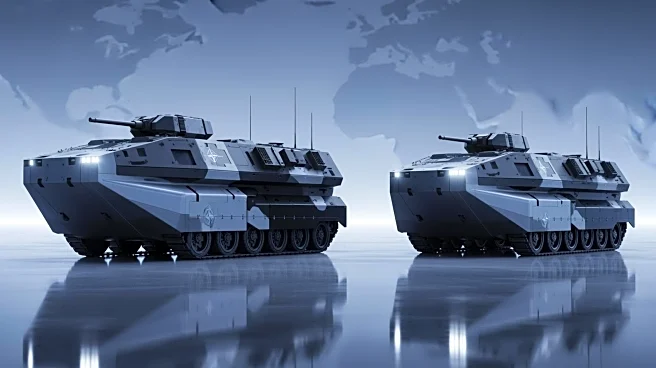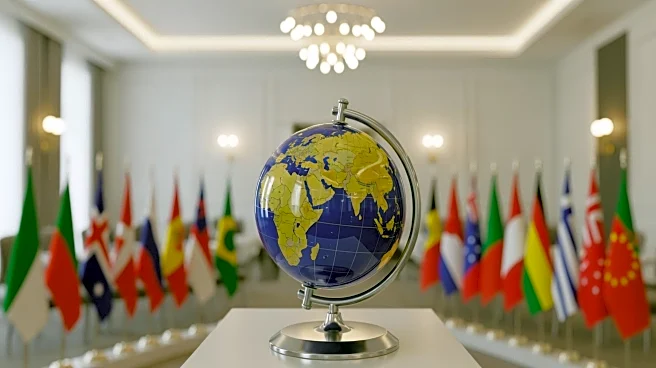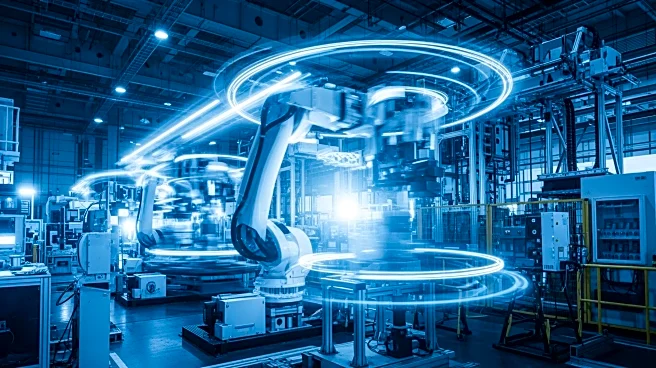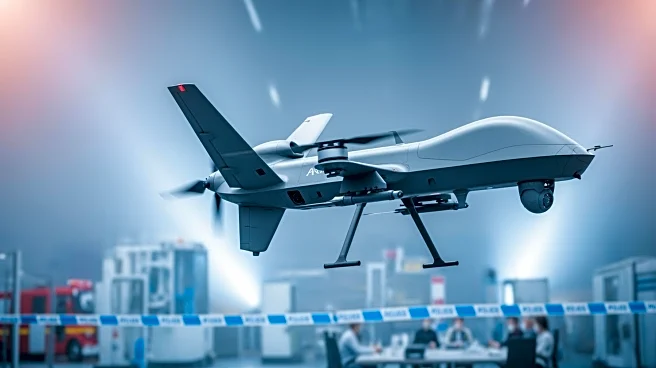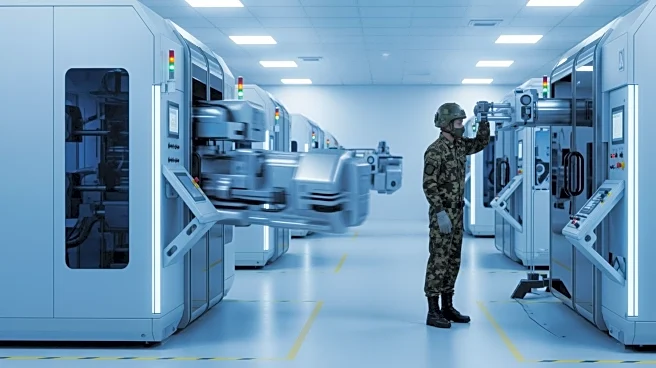What's Happening?
Germany and the UK have entered into a contract valued at over €450 million ($520 million) with the Organisation for Joint Armament Cooperation (OCCAR) for the acquisition of M3 amphibious bridging and ferry
vehicles. This agreement, part of the Wide Wet Gap Crossing Program, aims to enhance military operations and disaster response capabilities by providing state-of-the-art floating-bridge systems. The M3 EVO systems will replace the British Army's existing M3 Amphibious Rigs, which have been in service for approximately 30 years. The new systems are designed to transport troops and heavy equipment, such as main battle tanks, across major water obstacles. The UK will receive 36 amphibious bridging vehicles, with the equipment expected to enter service in the early 2030s.
Why It's Important?
The acquisition of M3 amphibious bridging vehicles is crucial for NATO's operational readiness and interoperability among member nations. These vehicles will significantly enhance the maneuverability of NATO forces, allowing for quick deployment and adaptable movement over challenging terrains. The deal underscores the importance of maintaining robust supply chains and technological advancements to meet current and future defense requirements. With more than 90% of NATO's amphibious bridging capabilities supplied by GDELS, this agreement strengthens the alliance's ability to respond effectively to military and humanitarian situations.
What's Next?
The new M3 EVO systems are scheduled to enter service in the early 2030s, operated by the British Army Royal Engineers as part of a joint UK-German Amphibious Engineer Battalion based in Minden, Germany. Germany will also acquire the UK's General Support Bridge (GSB) system through a separate agreement, further enhancing NATO's bridging capabilities. The expansion of production sites in Kaiserslautern and Sembach, Germany, will support the increased demand for these systems, ensuring timely delivery and deployment.
